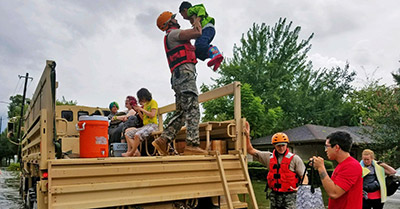UW researchers evaluate the use of text messaging and other tools during emergencies
In the aftermath of the catastrophic 2010 earthquake in Haiti, a texting platform helped to save lives and coordinate emergency response. As existing emergency systems failed, text messages were still getting through.

Researchers from the University of Washington School of Public Health have been evaluating innovative emergency communications tools, such as text messaging, to find out what it takes to turn evidence into practice to improve preparedness and response.
Outcomes of the PERRCoLate project, conducted by researchers in the Northwest Center for Public Health Practice, were presented during an online symposium in June. Among the key findings, according to researchers, was that leaders have the potential to be change agents, as their support for new ideas is linked to successful implementation.
“Our work has begun to expose implementation challenges to preparedness and emergency response systems in the U.S.,” says Janet Baseman, principal investigator of the project. “We hope that by bringing these challenges to light, researchers and public health agency leaders will be able to start a conversation to come up with strategies for breaking down the barriers to better functioning public health preparedness and response systems.”
Baseman is associate chair and associate professor in the Department of Epidemiology at the School. She’s also an adjunct associate professor of health services.
She and her research team, including Project Manager Debra Revere, clinical instructor of health services at the School, focused on three communications tools: an SMS (Short Message Service) toolkit, an online training course, and a tabletop exercise based on a pandemic flu scenario. Researchers worked with public health agencies in Washington state to test implementation of the tools in the real world.
Clark County Public Health, based in Vancouver, Washington, took part in the evaluation to explore opportunities to use SMS in public communications. Agency staff responded positively to the toolkit, but were challenged by cost, capacity and concerns about controlling messaging.
The agency decided not to implement the use of SMS, but recognized the value of the toolkit for larger urban areas. Staff also identified gaps in the system and potential solutions for future implementation.
In another example, Thurston County, home to the Washington state capitol, Olympia, saw the project as an opportunity to address gaps in communication identified after Cascadia Rising, a multi-state exercise simulating a catastrophic earthquake.
The county’s public health department offered online training courses to select staff — 73 percent of staff completed the training and 88 percent of those said it was worth their time. Also, 41 percent of those trained said they had applied what they learned within a few months, including to their response to a toxic algae bloom in the spring.
PERRCoLate researchers also found that emergency preparedness tools and trainings should:

- Include opportunities for practicing skills and applying information learned.
- Support an agency’s overall emergency preparedness vision and goals.
- Not be restricted to staff members who work in emergency preparedness and response, but be used across divisions.
“When public health emergencies (disease outbreaks, disasters, etc.) occur, public health agencies are on the front lines in responding to those events, working to minimize negative impacts on population health,” Baseman said. “Incorporating technological innovations and/or best-practices into preparedness systems can help those agencies do their work better, which ultimately translates into fewer emergency-associated negative health outcomes.”
The PERRCoLate project was funded by the Centers for Disease and Control and Prevention (CDC). The emergency communications tools and trainings used in the evaluation were identified after an inventory of products developed by Preparedness and Emergency Response Research Centers, or PERRCs, and Preparedness and Emergency Response Learning Centers, or PERLCs, all funded by the CDC.
(By Ashlie Chandler)
